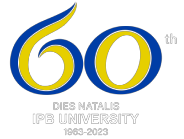Department of Forest Product
Department of Forest Product
Department of Forest Product (DHH) (in the past, it was named as Department of Forest Product Technology) was founded in the year 1969. DHH is the oldest Department of Forest Products in Indonesia and is focused on development of the science and technology of forest product which comprise forest product chemistry, biocomposite, technology of wood quality improvement, and design/engineering of wood structure.
Vision of DHH is becoming the prominent institution of higher education for developing science and technology innovation of forest product utilization, particularly for developing industry on the basis of sustainability of forest resources. The main competence possessed by DHH is technology of forest product utilization, which is manifested in 4 divisions, namely Division of Wood Quality Improvement, Division of Biocomposite, Division of Engineering and Design of Wood Structure, and Division of Forest Product Chemistry.
Competences of Division of Wood Quality Improvement are wood anatomy, wood properties, wood quality, termite control, and wood drying. Competences of Division of Biocomposite are biocomposite technology, wood adhesion technology, and quantitative analysis and economics of forestry. Competences of Division of Engineering and Design of Wood Structure are wood engineering, wood mechanical and physical properties, wood destructive test, and protection of wood structure. Division of Forest Product Chemistry possesses competences of forest product chemistry, pulp and paper technology, wood chemical properties, and non wood forest products.



